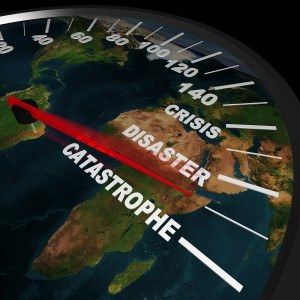Australia’s Northern Queensland experienced widespread flooding from Jan. 26 to Feb. 7, which cost insurers more than A$893 million (US$635 million) with total economic losses of at least A$1.7 billion (US$1.2 billion). according to Impact Forecasting, Aon’s catastrophe model development team.
 More than 22,204 claims were filed as a result of the floods, which killed at least three people, and most severely hit the coastal city of Townsville, said Aon’s Global Catastrophe Recap – February 2019.
More than 22,204 claims were filed as a result of the floods, which killed at least three people, and most severely hit the coastal city of Townsville, said Aon’s Global Catastrophe Recap – February 2019.
Aon’s Impact Forecasting went on to detail other multi-million dollar catastrophes across the globe, beginning with U.S. events during February, including:
- Pacific storm system hits California on Feb. 1-3. Flooding rains caused rivers to burst their banks and debris flows hit Holy and Woolsey fire-burn areas. Total economic damage was anticipated to reach US$250 million, while public and private insurers were estimated to cover up to US$100 million.
- Multiple storm systems in the U.S. Midwest and Canada on Feb. 5-8.Periods of heavy snow, freezing rain, and ice leds to the deaths of at least four people. Total combined economic and insured losses from the events were expected to reach into the millions of dollars.
- Winter storms brought widespread disruption on Feb. 9-12. The most significant damage resulted from heavy snow and accumulating freezing rain in parts of the Pacific Northwest, Midwest, and Northeast. Total damage and interruption losses were estimated in the millions of dollars.
- Hawaiian storms on Feb. 10. A powerful upper level area of low pressure produced hurricane-force wind gusts, torrential rains, high surf, mountain snow, and some of the coldest temperatures in years. Nearly every main island reported varying levels of effects, though Oahu was affected the most.
- Severe weather in Central and Eastern U.S. on Feb. 22-26. Powerful thunderstorms generated tornadoes, large hail, damaging straight-line winds and flooding rainfall, killing at least four people and injuring dozens. Sections of Tennessee, Mississippi, and Alabama were among the hardest-hit by the convective storms and flooding. Total economic and insured losses were expected to reach into the hundreds of millions of dollars.
- Record rainfall in Northern California on Feb. 26-28. The resulting river flooding and landslides killed at least one person. More than 2,000 homes were damaged or destroyed. Total economic damage was expected to reach well into the millions of dollars.
Other global natural disaster events during the month included:
- Chile floods. Torrential rains caused flooding in Chile during the first 10 days of February, killing at least six people. More than 5,700 homes were damaged or destroyed in the Arica y Parinacota, Tarapacá, and Antofagasta regions. The Chilean government allocated 60 billion Chilean pesos (US$91 million) for event relief.
- Severe weather in Mediterranean region on Feb. 23-26. The combination of strong winds and heavy rainfall caused moderate damage in Italy, Croatia, Greece, and Malta, killing at least eight people. The financial impact was expected to exceed €200 million.
- Bolivian landslides on Feb. 2-4. Following days of heavy rainfall, multiple landslides were triggered. On Feb. 2, a mudslide struck multiple cars on the mountain highway, killing at least 23 people were killed or missing.
“As the calendar begins to shift from winter to spring in the Northern Hemisphere, increased focus is now on the official arrival of El Niño,” commented Steve Bowen, Impact Forecasting Director and Meteorologist.
“While currently a weak El Niño episode and not expected to have significant impacts on global weather patterns, such conditions can still enhance regional phenomena,” he added. “Given that the second and third quarters are typically the costliest for catastrophe losses, there will be continued monitoring of whether El Niño may have any notable influence on upcoming events.”
Source: Aon’s Impact Forecasting
*This story appeared previously in our sister publication Insurance Journal.



















 First Atlantic Hurricane Forecast for 2026 Suggests Season Close to 30-Year Norm
First Atlantic Hurricane Forecast for 2026 Suggests Season Close to 30-Year Norm  How Insurers Can Avoid Post-Merger Technology Failure
How Insurers Can Avoid Post-Merger Technology Failure  Artificial Intelligence Is Rewriting the Rules for Commercial Lines
Artificial Intelligence Is Rewriting the Rules for Commercial Lines  Good Times for U.S. P/C Insurers May Not Last; Auto Challenges Ahead
Good Times for U.S. P/C Insurers May Not Last; Auto Challenges Ahead 















